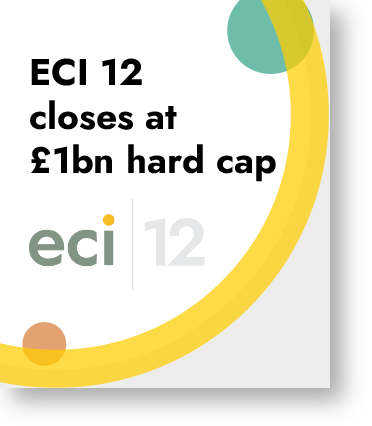The IT managed services market is an attractive space with the growth of providers driven by the increasing need for companies (their customers) to have digital, scalable, and secure IT estates. There are a number of well-funded consolidators already in the market and there continues to be interest from private equity firms. It is therefore a competitive M&A environment for managed service providers (MSPs) and it is likely that an MSP pursuing an acquisition is competing with other trade acquirers and standalone private equity firms alike.
This is especially true for target acquisitions with scale or in niche high growth areas – companies with cyber security or public cloud skills being good examples of the latter. As the MSP buy-and-build market matures, with more competition and higher prices, how are some MSPs setting themselves up to win?
1. M&A strategy
A great aspect of consolidation in the MSP space is that there is fairly open information about companies in the market. Megabuyte, CRN and Companies House, for example, provide data sources that can be used to create a good market map of acquisition targets. At ECI, we have a proprietary in-house machine learning tool – Amplifind™ – that we use to bring together this data alongside keyword searches to help prioritise prospects.
Lots of data is a good thing, however, it’s also a large market and successful M&A usually requires focus and conviction. Therefore, the best way to ensure that time and effort are being used wisely is to develop a crystal clear strategy. If there is clarity over where an MSP wants to be in five years’ time, its management team can then determine the skills or services they need to develop in the near term through M&A or organic investment. In our experience at ECI, a M&A strategy is most likely to be successful when it is customer led – i.e. buying services that an MSP’s existing and prospective customers want. Having this strategic overlay means that an MSP can shortlist and prioritise targets more easily.
A good example of this is Content+Cloud. Shortly after ECI’s investment, C+C developed a strategy to become the UK’s leading Microsoft partner, offering their customers services across Microsoft’s three cloud ecosystem. That strategy gave C+C real clarity as to what they needed to acquire and allowed them to communicate to the vendors of target acquisitions a clear vision, articulating how they would fit in with this journey. Vendors were attracted to this transparency.
2. Resourcing M&A
M&A takes up a lot of time – whether it is building relationships with corporate finance advisors, finding and meeting businesses or executing a transaction – it isn’t something that a CEO or CFO can easily do at pace in their spare time. They are typically busy enough with the day job.
A private equity partner can help support a management team by providing horsepower. For example, at ECI our Origination Team has supported management teams develop their strategies, build market maps and reach out to targets, whilst also providing an initial evaluation of those target acquisitions. ECI’s investment team can help on executing the deal with all that involves (legals, structuring and due diligence etc.) and ECI’s commercial team can help with integration planning.
Providing this M&A muscle to support a team’s vision and strategy is important, but we also often see our investments recruit additional acquisition resource in-house. Particularly, if they want to do lots of M&A. An internal M&A individual can provide real focus and pace to the MSP’s acquisition strategy and means that the buy-and-build approach becomes less opportunistic and more strategic.
3. Understanding pricing
Often deals might seem too expensive or aren’t quite the perfect fit with the strategy, so it is important to be pragmatic and recognise that the perfect acquisition at a highly attractive price might never present itself.
M&A is often about compromise and finding a route through to a deal that works for vendors, acquirers and management teams. To have the best chance of agreeing a deal, it is important to really listen to vendors, as that will give you a much better understanding of their ambitions, both personal and professional. It also gives an acquiror a better understanding of the value that acquisition will bring. Finally, it is also important to understand other deals in the sector and whether an offer is at a premium or a discount to similar transactions. Through this an acquiror can try to put forward a deal that is attractive to all stakeholders.
This is becoming particularly important where pricing is inflationary as is the case in the IT managed services market. Pricing for acquisitions has gone up significantly in the last five years – so understanding the strategic attractiveness of the deal, what a vendor wants, the scarcity of the business and some knowledge of other M&A activity in the sector, will help MSPs to pay up for the right deals.
4. A clear integration plan
MSPs that have been through an acquisition will already have learned a lot of important lessons around back office and customer facing integrations.
What we’ve found at ECI is the more you can move the business to a singular back office, the more scalable and efficient it will be (in this article Peoplesafe’s CTO, Peter McNaney, shares the importance of creating one version of the truth).
Those with a customer-first M&A strategy will find it easier to deliver front-end integration, as they will have already considered how they might be able to cross-sell products or services.
Brand strategy also presents an interesting set of options for acquirors. Often companies will look to move acquisitions under one brand, but this might not always be the best approach. For example, MSPs often have a different brand for their cyber security services, so that it feels distinct to the MSP’s core offering (which builds and maintains the very infrastructure the cyber provider may be trying to test). Similarly, some acquisitions may have brand equity that is valuable to retain. The main thing is having a brand strategy rather than being a blind brand accumulator.
If you would like to find out more about our experience in the MSP space please get in touch here.


